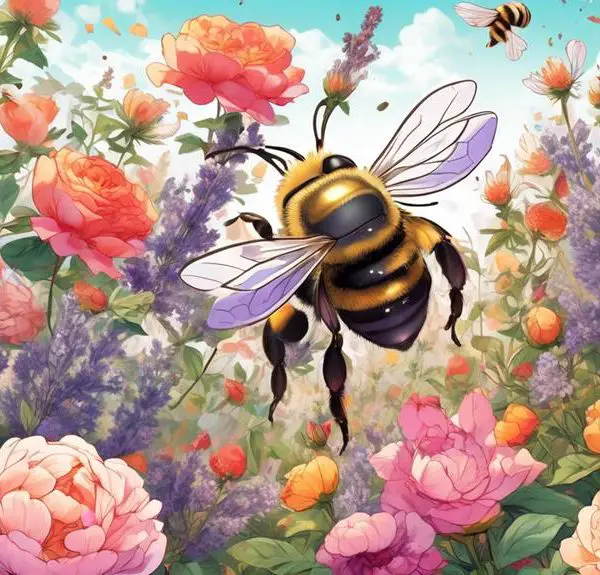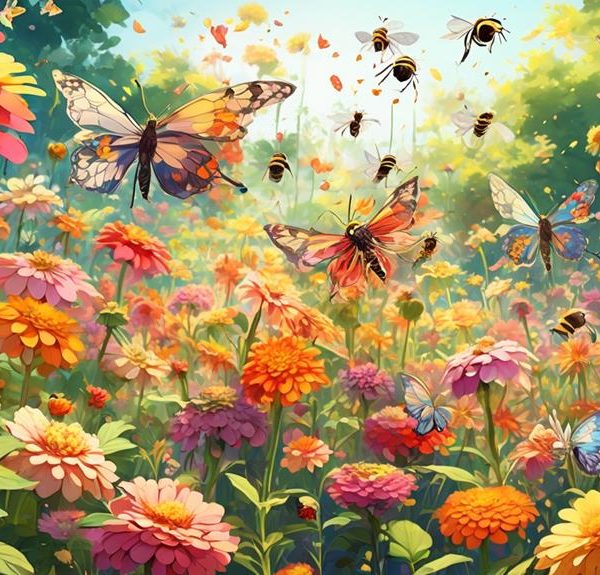Grasp the captivating link between bees and dandelions, and discover why this bond matters to you.
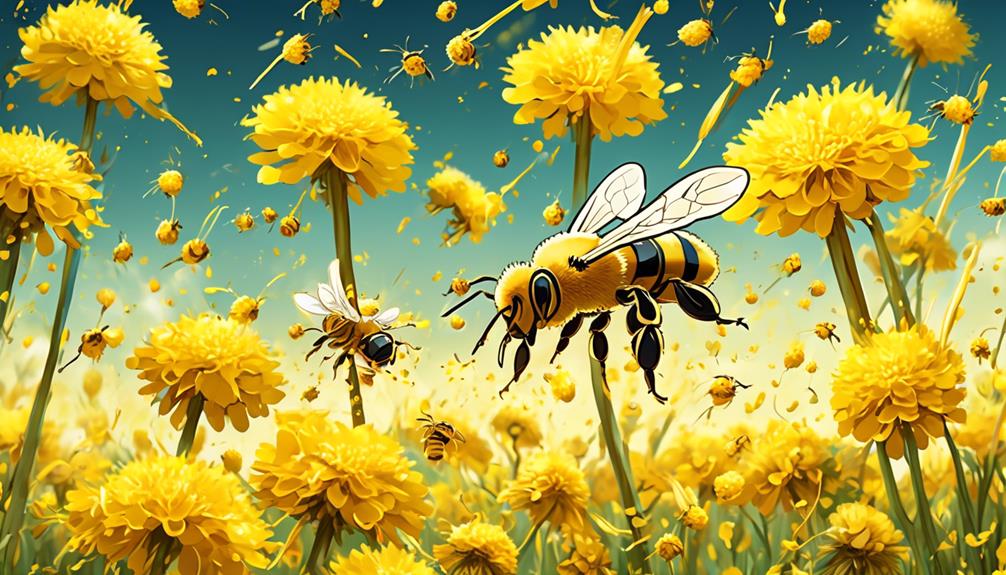
Do Bees Like Dandelions?
Just as the ancient Greeks were drawn to the mythical golden fleece, you might be curious about the allure of radiant dandelions to bees.
Consider this: with their vibrant yellow blooms and bountiful nectar, dandelions seem a veritable bee's paradise.
But are they as appealing to our buzzing friends as they appear, or is their relation more complex than meets the eye?
Linger a bit, as we unfold the intriguing connection between bees and these golden blossoms, and discover why this matters to you.
Key Takeaways
- Dandelions are a vital source of early spring sustenance for bees, providing them with pollen and nectar.
- Bees are attracted to the yellow blooms of dandelions due to their ability to perceive ultraviolet light.
- Dandelions play a crucial role in the survival and reproduction success of bees, directly impacting their population.
- Planting more dandelions can support and encourage bee populations.
Understanding Bees and Dandelions
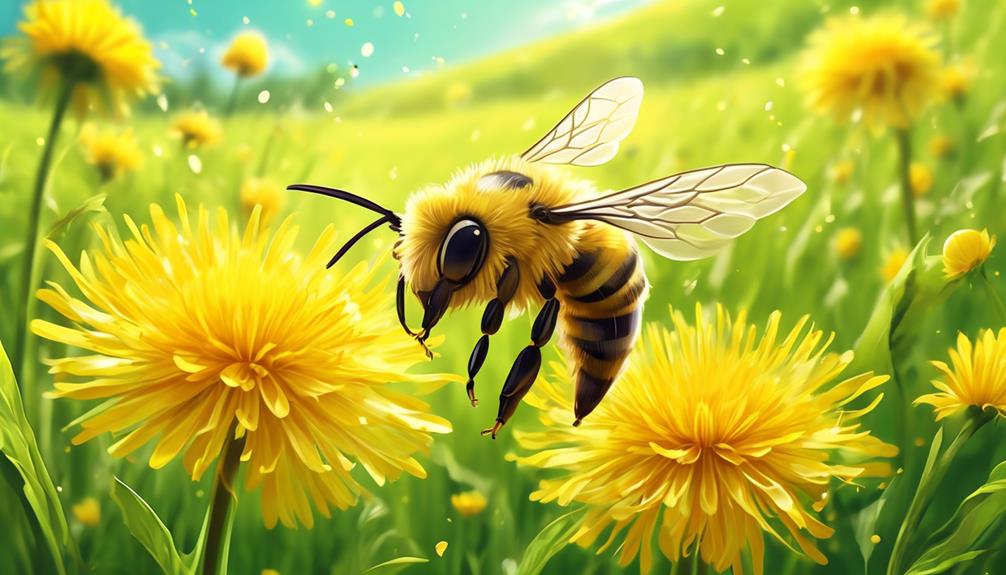
In the world of bees, dandelions aren't just a commonplace weed, but a vital source of early spring sustenance, packed with pollen and nectar. You see, bees, especially honeybees, rely heavily on these bright yellow beauties for nourishment after a long, cold winter.
If you watch closely, you'll notice that bees are attracted to dandelions like magnets. That's because dandelions, unlike some other flowers, are very generous, providing plentiful nectar and pollen. This makes them a bee's best friend, especially during early spring when other food sources might still be scarce.
Dandelions also provide a vital service to bees in terms of their life-cycle. Female bees collect the pollen to feed their offspring, so without dandelions, bees would struggle to reproduce. The nectar, on the other hand, is consumed by adult bees for energy.
It's also worth noting that the relationship between bees and dandelions is mutual. As bees dart from flower to flower, they're inadvertently pollinating the dandelions, helping them to reproduce.
Bees' Attraction to Yellow Blooms
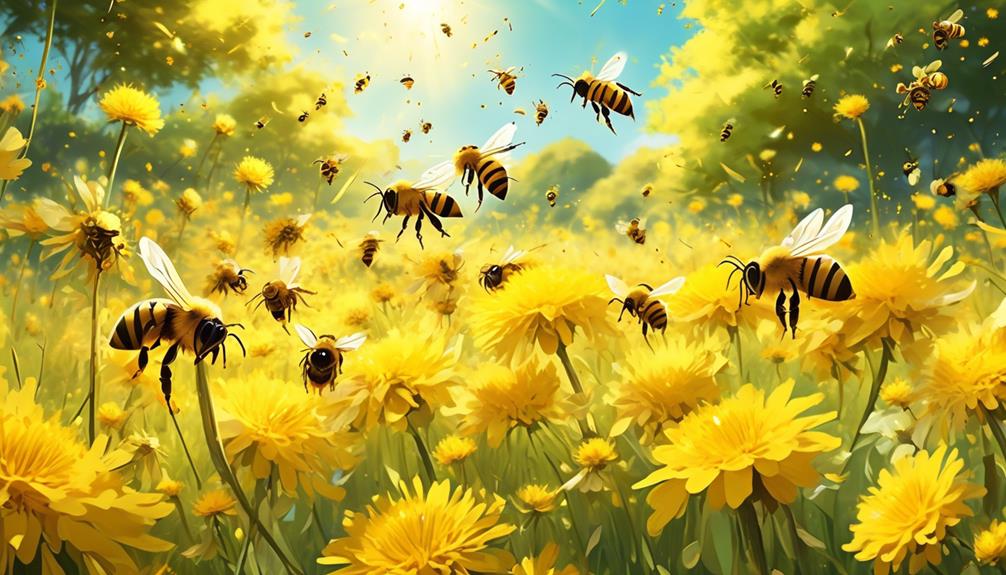
While we've established the importance of dandelions to bees, you might wonder why the color yellow, in particular, attracts these buzzing pollinators. Science has an answer. Bees, unlike humans, see the world through a different spectrum. They can perceive ultraviolet light, which we can't, and their vision leans towards the blue and green spectrum, with yellow appearing bright.
Now, consider a dandelion's yellow bloom. It's not just the color, but the pattern. The petal's UV reflection creates a bullseye pattern that's invisible to us but a beacon to bees. It's like an illuminated sign, directing bees straight to the flower's nectar.
Moreover, dandelions produce a significant amount of nectar and pollen, both critical for bees' survival. The yellow color acts as an added attraction, enhancing the flower's visibility from a distance. It's an evolutionary trait, a symbiosis where both species benefit. The dandelions get pollinated, ensuring their survival, while the bees get food.
The Role of Nectar and Pollen
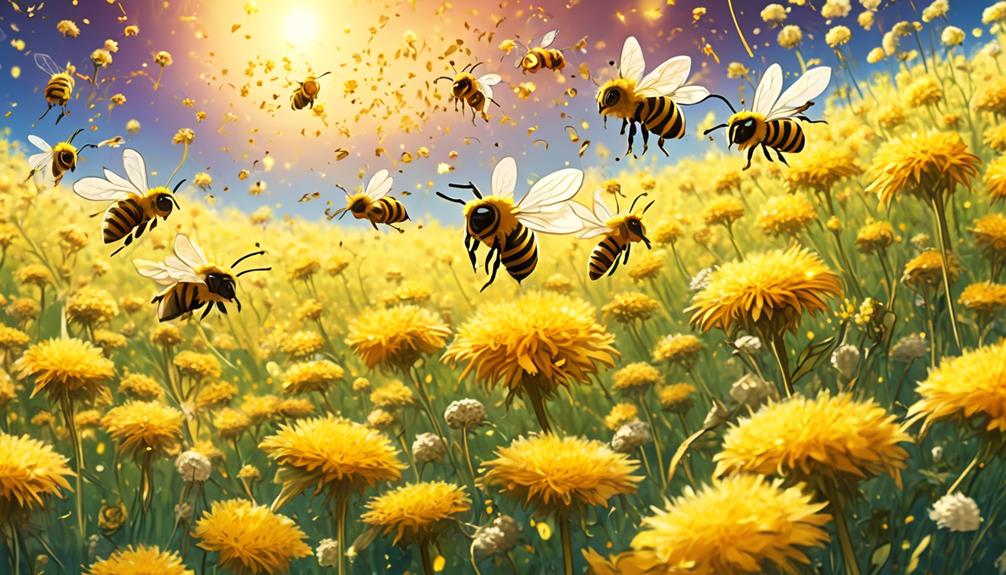
Feasting on the rich nectar and pollen provided by dandelions, bees not only find a reliable food source but also play an indispensable role in the plant's life cycle. The nectar, laden with natural sugars, offers immediate energy while pollen provides essential proteins and fats for longer-term sustenance.
In return, bees are the perfect pollinators, inadvertently transporting pollen from the male parts of a flower to the female parts as they move from bloom to bloom. This cross-pollination is vital for plant reproduction and genetic diversity.
Role of Nectar in Bees' Diet | Role of Pollen in Bees' Diet |
|---|---|
Provides immediate energy | Provides essential proteins |
Rich in natural sugars | Offers vital fats |
Sourced from dandelion nectar | Collected from dandelion pollen |
Consumed by worker bees | Fed to larvae |
Essential for honey production | Crucial for bee development |
In this symbiotic relationship, it's clear that dandelions aren't just a pretty sight for us, they're a lifeline for bees. By understanding this, you can help promote a healthy ecosystem in your own backyard.
Dandelions' Impact on Bee Population
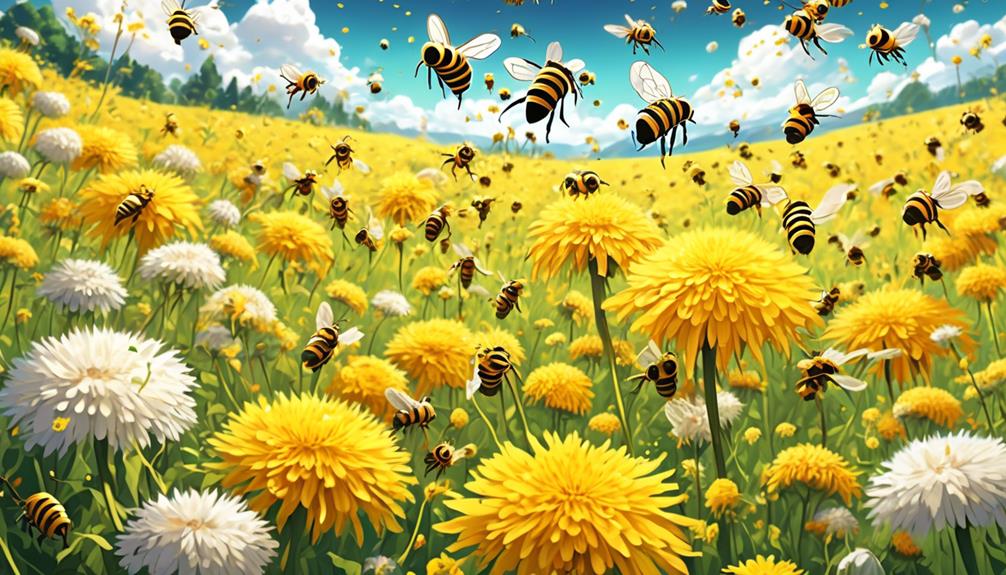
Dandelions, often considered a nuisance in manicured lawns, play a crucial role in increasing the bee population. You might wonder how these yellow-headed weeds contribute to bee conservation. Well, let's delve into the science of it.
Dandelions bloom early in the spring, providing bees with a vital source of nectar and pollen after a long winter when other food sources are scarce. These easily accessible, nutrient-rich resources play an essential role in the survival and reproduction success of bees, directly impacting their population.
Furthermore, dandelions' long blooming period from spring to fall ensures a consistent food source for bees. They're one of the first plants you'll see bees flock to as the weather warms. And they're one of the last sources of nectar in the fall, giving bees a final feeding frenzy before winter sets in.
While you're likely more interested in maintaining a perfect green lawn, it's worth considering the broader ecological significance of dandelions. They're a lifeline for bees, and by extension, they're a lifeline for our entire ecosystem. So next time you see a dandelion, remember its essential role in supporting our bee populations.
Bees-Dandelions Symbiosis Explained
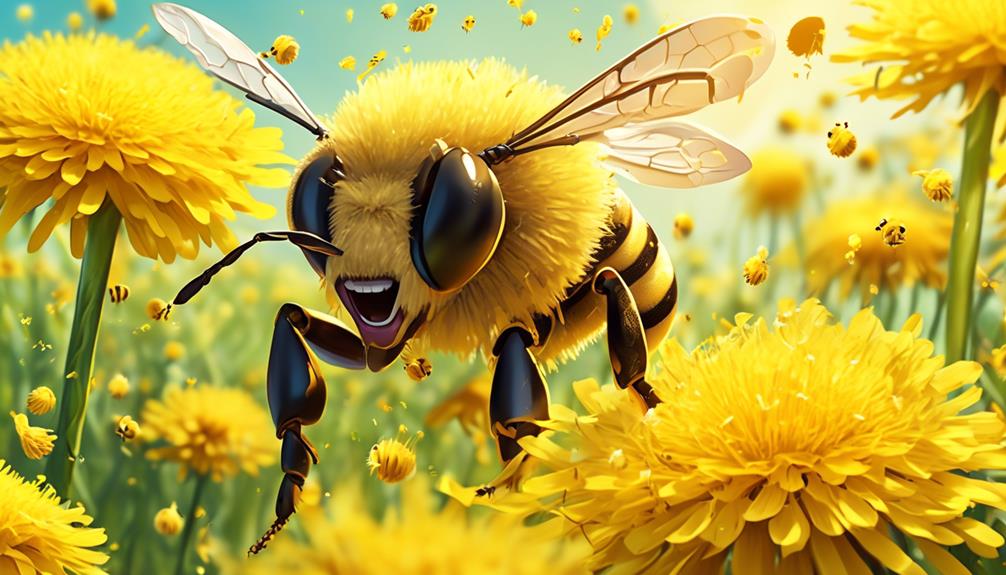
You might be intrigued to understand the symbiotic relationship between bees and dandelions, a fascinating ecological partnership that underscores the interconnectedness of nature.
Here's how it works: bees collect nectar and pollen from dandelions, which they use for food and the production of honey. In return, the bees help dandelions with pollination, which is essential for the plant's reproduction.
Now, let's delve into the specifics. As bees forage for nectar, they transfer pollen grains from the male parts of a dandelion to the female parts of another, thus fertilizing the flower and enabling it to produce seeds. This process, known as cross-pollination, significantly boosts the genetic diversity among dandelions, which is crucial for their survival and evolution.
On the other hand, dandelions provide an early, abundant source of food for bees, particularly in the spring when other food sources may be scarce. Dandelions' bright yellow flowers are rich in both nectar and pollen, making them an irresistible feast for bees.
Encouraging Bees: Plant More Dandelions
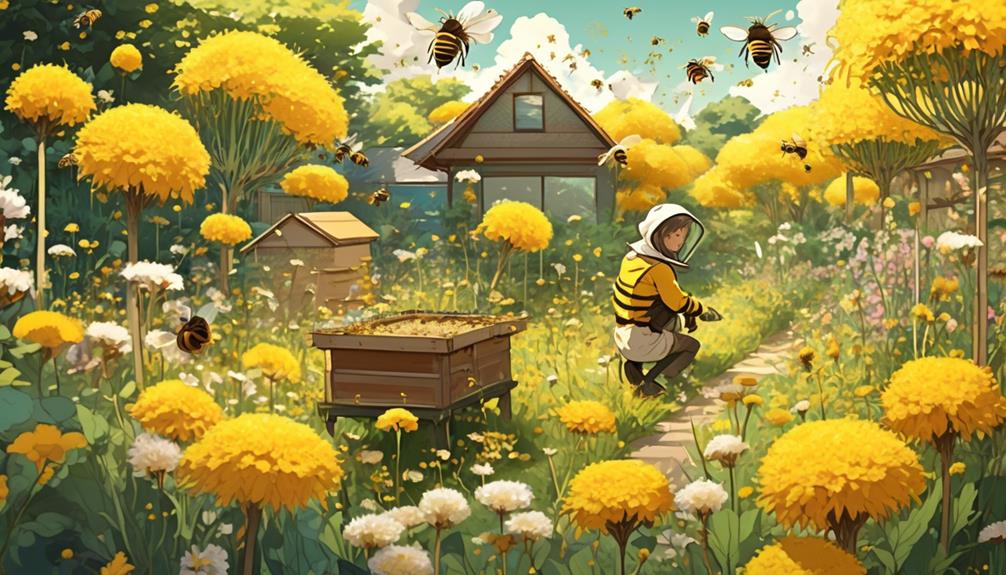
Given this mutually beneficial relationship between bees and dandelions, it's clear that planting more dandelions could be an effective strategy to support and encourage our bee populations. By doing so, you're providing bees with a rich source of nectar and pollen, vital nutrients for their survival.
Dandelions bloom early in the spring and late into the fall, bridging the gap when other food sources are scarce. They're like a reliable fast-food joint for bees, always open when they need it. Moreover, dandelions are hardy and can thrive in various conditions, making them an easy plant to incorporate into your garden or backyard.
But it's not just about quantity; quality matters too. Avoid using pesticides or herbicides on your dandelions. These chemicals can harm bees or contaminate their food supply. Instead, let the dandelions grow naturally, allowing them to reach their full potential as a bee food source.
Frequently Asked Questions
Do Bees Prefer Dandelions Over Other Types of Flowers?"
Yes, bees do prefer dandelions over other flowers. You'll often notice them buzzing around these bright yellow plants. Dandelions are one of the first food sources for bees in the spring, providing vital nectar and pollen.
However, bees aren't exclusive to dandelions. They're also attracted to other flowers, depending on their availability and the specific needs of the bee species. It's a fascinating display of nature's intricate balance.
What Can Homeowners Do to Prevent Bees From Being Attracted to Dandelions in Their Yards?"
You can deter bees from your yard by reducing dandelions. Regularly mow your lawn and apply a pre-emergent herbicide in early spring to prevent dandelions from sprouting.
Plant less attractive flowers for bees such as begonias or geraniums.
You could also install a water feature as bees are drawn to water. However, remember that bees are important for pollination, so consider creating a bee-friendly area away from your main outdoor living space.
Are There Adverse Effects on Bees if There Are No Dandelions Available?"
If there're no dandelions available, it wouldn't necessarily harm bees. They're versatile creatures and can adapt to feed on other nectar sources.
However, dandelions are one of the first spring flowers, providing an early food source. So, a lack of dandelions might mean bees go hungry earlier in the year.
It's all about diversity and timing. Bees need a range of flowers that bloom at different times to ensure a steady food supply.
What Other Types of Plants Do Bees Get Attracted to Apart From Dandelions?"
You're curious about what other plants attract bees besides dandelions. Bees are drawn to a variety of plants, not just dandelions.
Clover, goldenrod, and asters are bee favorites. They're also attracted to the blooms of fruit trees like apples and cherries.
Bees prefer flowers that are blue, purple, and yellow. So, if you're looking to attract bees, plant a diverse range of these flowers and watch them come buzzing.
Are There Any Specific Species of Bees That Are Particularly Fond of Dandelions?"
Certainly, you'd find that various bee species have a particular fondness for dandelions. Honeybees, for instance, are often observed frequenting these yellow blooms. Bumblebees too, especially the Bombus terrestris species, take a keen interest in them.
Dandelions are rich in both nectar and pollen, making them an attractive food source. Remember, bees' preferences can vary, but most can't resist the allure of a dandelion field.
Conclusion
So, you see, bees do love dandelions. These bright yellow flowers are more than just a burst of color. They're a vital food source, teeming with nectar and pollen. Dandelions help sustain bee populations, and in return, bees aid in their pollination.
It's a fantastic example of nature's symbiosis. Want to give our buzzing friends a hand? Plant more dandelions. It's a simple act that could make a world of difference for them.

